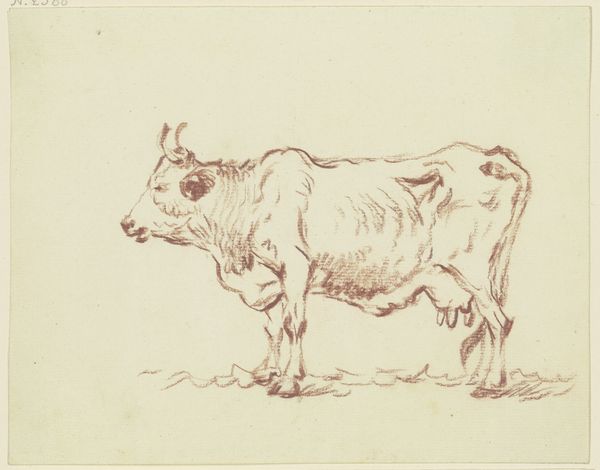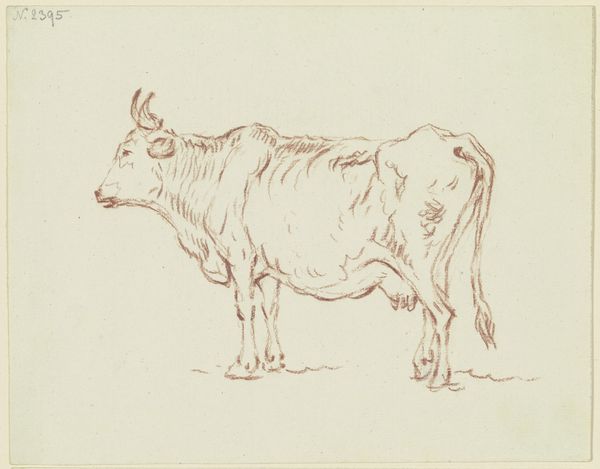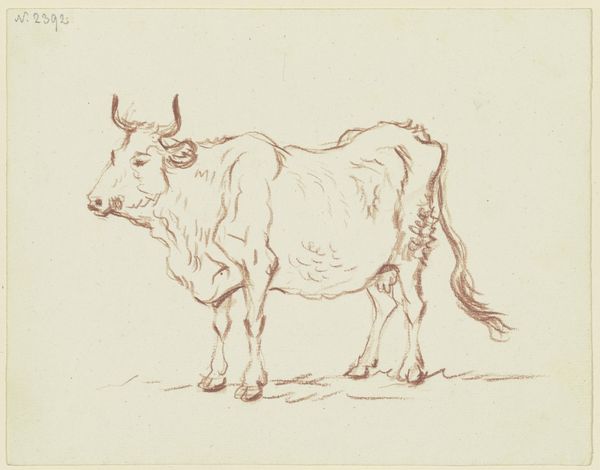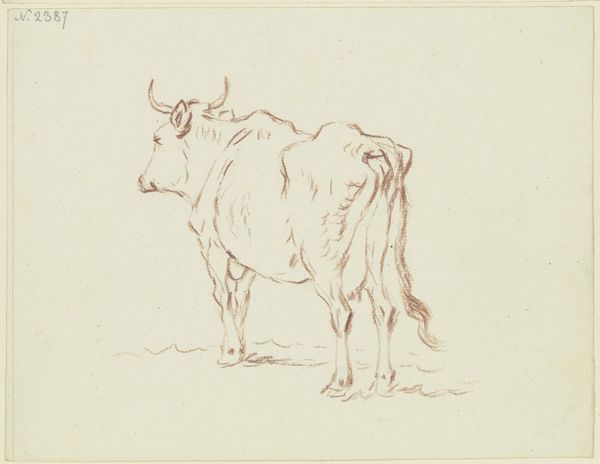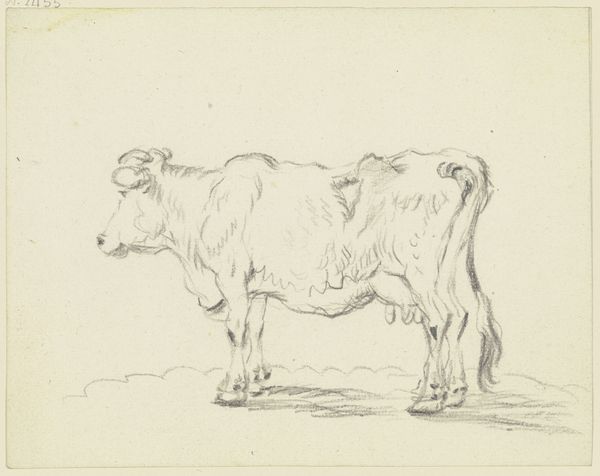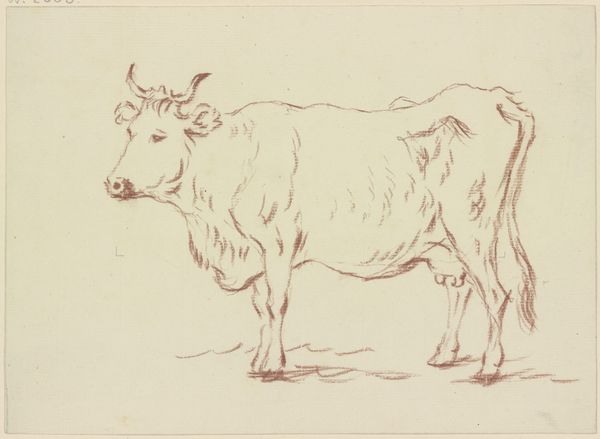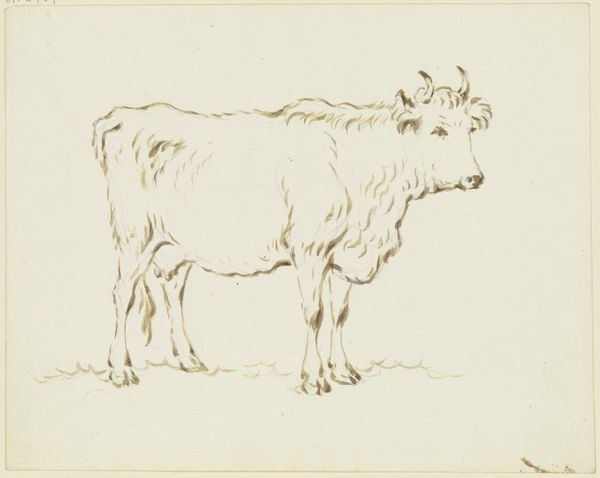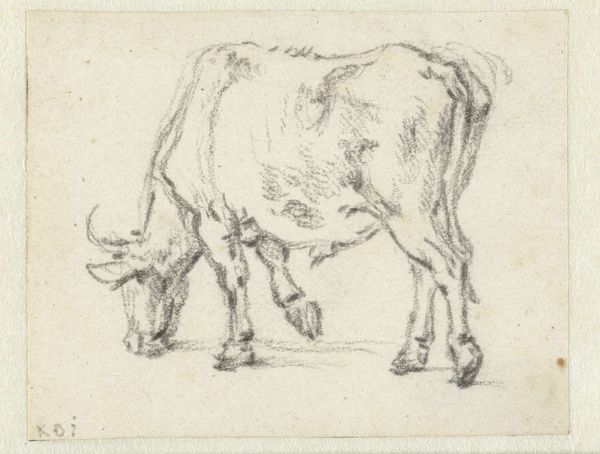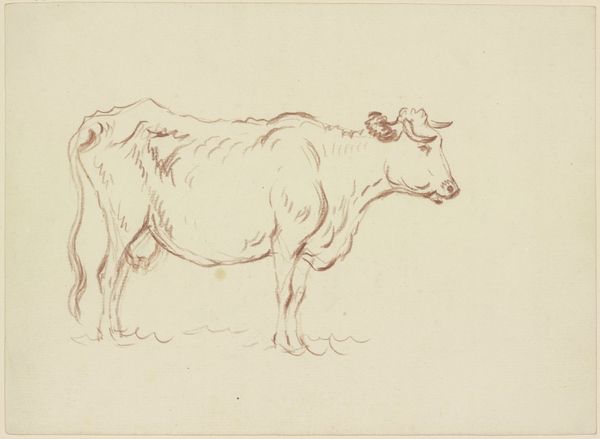
drawing, red-chalk, dry-media, pencil
#
portrait
#
drawing
#
red-chalk
#
pencil sketch
#
landscape
#
etching
#
figuration
#
dry-media
#
pencil
#
15_18th-century
#
realism
Copyright: Public Domain
Editor: We’re looking at “Standing cow to the left,” a red-chalk drawing by Friedrich Wilhelm Hirt, likely from the 18th century. It’s quite simple; just a cow rendered in reddish-brown lines. What do you notice first about its formal elements? Curator: The line, undeniably. Its quality varies – confident outlines versus tentative, almost scribbled infill. Notice how this textural variation impacts our reading of form and depth. Does the inconsistent rendering flatten the figure or add dimension? Editor: I think it's a bit flat, perhaps because there isn't much shading to describe the volume. The emphasis is definitely on the contour. Does the limited tonal range play a significant role? Curator: Absolutely. The limited range of the red chalk places the emphasis on shape and line rather than dramatic light and shadow. See how Hirt uses hatching – parallel lines – to suggest the musculature of the animal, however minimally? It directs our eye and describes the form economically. Do you think that's effective? Editor: Yes, I do. It’s simple but evocative. Are there other techniques that catch your attention? Curator: The composition itself is quite stark, wouldn't you agree? The cow occupies almost the entire picture plane. What’s the impact of that compositional decision? Editor: I think it makes the cow a monumental figure, despite its small size and humble subject. It forces us to really look at the animal. Curator: Precisely. And what initially seemed like a quick sketch reveals itself to be a carefully considered study of form and line. The starkness emphasizes Hirt's focused interest on line and structure, and on the essential qualities of the animal. Editor: I see that now. I was initially underwhelmed by the simplicity, but looking closer at how it uses the red chalk really opens it up. Curator: Exactly. Focusing on form and line and recognizing these qualities helps us appreciate the complexity behind apparent simplicity.
Comments
No comments
Be the first to comment and join the conversation on the ultimate creative platform.

